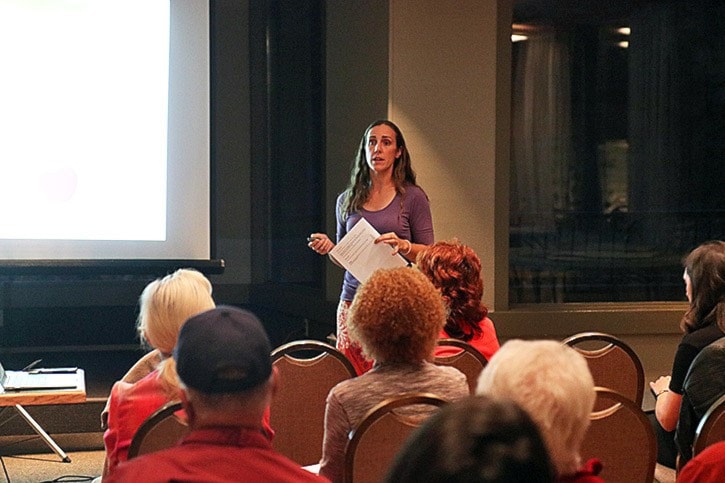The Hope and Area Food Security Coalition made its community food survey report public on Sept. 22 at the Hope Golf Club.
It highlights that Hope has several challenges including high levels of food vulnerability, hidden food insecurity, lack of affordability and means, high value placed on healthy food, desire for greater local food and a disconnection to outside resources.
The data showed that 21 per cent of those polled experienced deprivation when they face sudden spikes in prices or other challenges.
“They either said they just ate rice all the time or they slept more when they ran out of food, or they went and had noodles, like, cheap ramen noodles,” said presenter and Hope & Area Food Security Coalition’s co-chair Jennifer Hawkins.
Hawkins also noted that a repeated theme was that healthy food came at a high price.
Compounding this problem, Hawkins said 42 per cent of those do not access the food bank.
“People feel very embarrassed, and so they don’t reach out to friends and family,” said Hawkins. “So it’s hidden.”
On the topic of a disconnection to outside resources, Hawkins said seniors knew better what programs there were for them.
“But some of the other focus groups and people that wrote in the survey — they didn't know,” said Hawkins. They didn't know about the whole veggie box or what other things might be available to them. And there really aren't a lot.”
It also highlights that Hope residents value healthy food highly, and want a greater local food system.
“The high value people place on fresh food — huge,” said Hawkins.
“And then also what surprised us was the strong desire for a local food movement. That came out very strongly. Very, very strongly.”
The survey noted that nutrition impacted their food buying decisions even more than cost or personal preferences.
In response, Hope residents will shop outside of Hope to access food from farms or shop at Hofstede's Country Barn for local food.
“The Farmer's Market in Hope was not seen as an authentic local food asset,” said the report.
The survey praised Hope as “impressively prepared for emergencies” and have “creative coping strategies, budgeting skills, and knowledge of food growing and preservation.”
It also noted that people in Hope want to learn more and people are willing to share their knowledge.
Transportation did not pose a significant problem for most, but some felt frustrated that they could not access cheaper prices elsewhere.
“It seems that people who can least afford it have little choice in the matter,” wrote the report.
It also highlighted that food access for people living outside Hope can be challenging because they have limited opportunities to come to town to shop.
The survey collected 373 total responses and 1,549 comments, but its authors admit that they did not have the resources to collect a verified random sample.
Its polling saw underrepresentation of the 15-19 demographic, its target demographic, and only just over 20 per cent of those polled were male.
